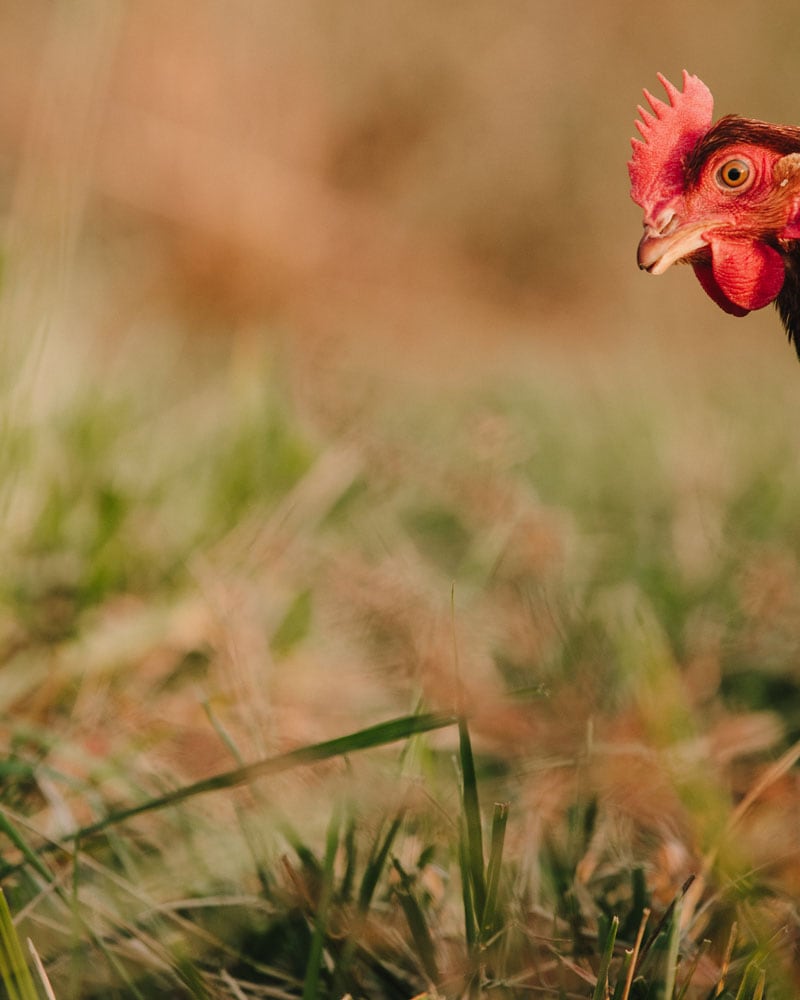
Among seamless quilts of Missouri farmland, Grace Spring Farm stands out from the crowd. This is a plot of land dressed from head to toe with tall, lush fields of cover crops. Bronze feathers and bright red combs of pasture-raised hens weave through the grass as it sways gently in the wind. Some may describe Grace Spring as “wild” or “unruly,” like a dense, overgrown forest without a trail. But to Hrang, the land is healthy, beautiful, and above all else – regeneratively managed.
Hrang grew up surrounded by farms in Burma (Myanmar). He was going to school for economics when the country was struck with violence, forcing many to flee for safety. Hrang dropped everything. He quickly married his wife, and together, they joined the wave of refugees.
“I moved to the United States when I was 24. Everyone in the world wants to go to the U.S., and most make the choice to. For us, we didn’t have choices. The fighting started when the military ruled over 70 years ago. In 1990, we had a civilian government, and then in 2008, the military took over again. They arrested the government leaders and put them in jail. The civilians didn’t like that, so they fought back. The whole country is still fighting.
“Everyone in the world wants to go to the U.S., and most make the choice to. For us, we didn’t have choices.”
“After spending time as a refugee in Guam, I finally made it to the U.S. When I got here, I couldn’t find a job, so I took a DSL English class to learn to communicate. Once I learned to speak English, I got a job at a hibachi grill and was trained to be a chef. I did that for almost 20 years and was also a private chef before we closed the deal on this farm.”
When Grace Spring began its operations in 2022, Hrang pressed pause on his hibachi career and headed to the Midwest.
“This farm used to be a dairy farm. When we arrived, the grass was overgrazed and there were a lot of bare spots. To fix the bare spots, we seed it. Right now, we’re seeding oat. And next season, we’ll seed millet.
“Regenerative farming takes care of the grass, is forage for the chickens, and makes for healthy soil. I attend regenerative workshops to learn more about soil. The workshops are like a biology class. We look into a microscope to see what healthy soil looks like.”
Hrang walked through a pasture of knee-high grass, reflecting on his life in Burma.
“Back in my country, we farm all kinds of animals. Our chickens are raised just like this. You have a coop on your land, and in the morning, you let the hens out, feed them, and they go wherever they want. Then, in the evening, they come back to their coop. Plus, everything in Burma is organic. We don’t do chemicals there. So it’s exciting to have a business that is organic here too.”
Life as a farmer never stops. Hrang works twelve hours a day, seven days a week. But with his positive, light-hearted attitude, he makes it look easy.
“I wake up without an alarm, because the hens are my alarm! I make breakfast and then come out here to work. I open the doors to let the hens out. And once one goes out, another follows. Then they all go out! They will go far from the barn. They love it out here.”
Hrang stands tall and looks proudly out over the pasture. “Running a business means you have to invest your time, knowledge, and experience. I’m usually by myself on the farm. It’s a lot of work.” He chuckles, “Before, when I was living in the city, I might have been concerned about how to be active to stay healthy, but now that I work here – I don’t need to worry about going to the gym anymore– this is my gym! And I like taking care of the chickens, living in the fresh air instead of a polluted city. I do my job on the farm, and then at the end of the day, I go inside and cook myself hibachi.
This,” Hrang gestures to the farm, “is what we chose to do.”
We’re pleased to share Hrang’s recipe for Hibachi Fried Rice. Channel your inner hibachi chef. Click here to try Hrang’s recipe in your own kitchen.







